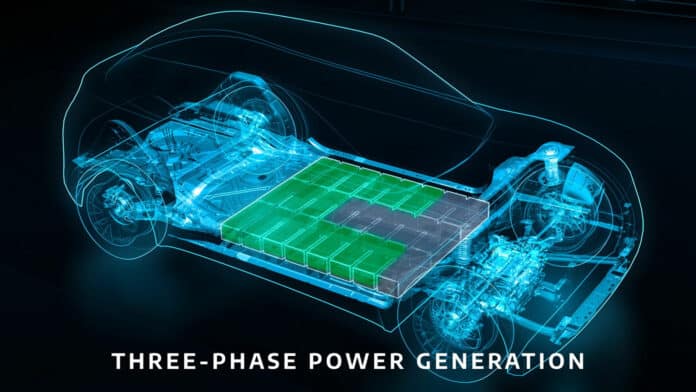Stellantis, in collaboration with French battery company Saft and French National Center for Scientific Research, has unveiled an innovative prototype of an energy storage battery. The new design integrates the inverter and charger functions into a battery, making the powertrain more efficient, more reliable, smaller, and less costly.
The collaborative research project is known as the Intelligent Battery Integrated System (IBIS). It is focused on developing a more efficient and less expensive energy storage system.
After four years of design, modeling, and simulation, a team of 25 people comprised of CNRS (French National Center for Scientific Research), Stellantis, and Saft engineers and researchers are now focused on building a fully functional prototype vehicle. The prototype will be tested on Stellantis development benches and test tracks as well as on open roads.
With IBIS, the electronic conversion boards that perform the power inverter and charger functions are mounted as close as possible to the lithium-ion battery cells. Stellantis says that IBIS’ sophisticated control system enables alternating current for an electric motor to be produced directly from the battery without the need for an inverter. This means that the inverter and onboard charger can be eliminated, leaving more room in the cabin for passengers and reducing weight.
“Our journey to electrification is fueled by innovation and research excellence that uses the latest technology to address the real needs of our EV customers such as range, roominess, and affordability while reducing carbon footprint by improving efficiency,” said Ned Curic, Stellantis Chief Engineering & Technology Officer. “This revolutionary battery system could mark a decisive step in Stellantis’ commitment to providing useful, easy, and advanced technology to all.”
By developing an efficient and cost-competitive technology, the IBIS project offers the opportunity to reduce vehicle weight and the cost of EV powertrain and vehicle manufacturing while offering a large number of new features. The IBIS project team intends to make this technology available on Stellantis brand vehicles before the end of this decade.
In the realm of stationary energy storage and renewable energy integration, Saft will be able to offer turnkey installations with improved battery availability, optimized use of installed energy, and a smaller footprint. The intrinsic architecture of the IBIS battery will simplify the maintenance and upgrade of the facility and reduce the site’s carbon footprint.
